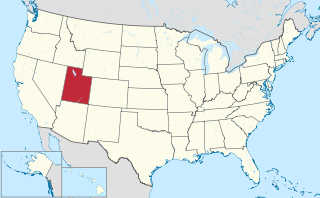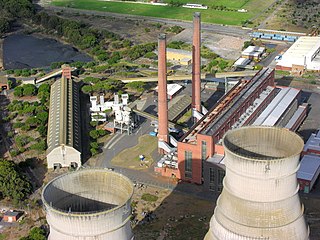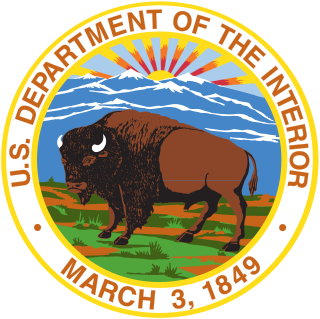Provisions/Elements of the bill
This summary is based largely on the summary provided by the Congressional Research Service, a public domain source. [2]

The Congressional Research Service (CRS), known as Congress's think tank, is a public policy research institute of the United States Congress. As a legislative branch agency within the Library of Congress, CRS works primarily and directly for Members of Congress, their Committees and staff on a confidential, nonpartisan basis.
The public domain consists of all the creative work to which no exclusive intellectual property rights apply. Those rights may have expired, been forfeited, expressly waived, or may be inapplicable.
The Bonneville Unit Clean Hydropower Facilitation Act states that its goal is to facilitate hydropower development on the Diamond Fork System in Utah. In order to do this, the act would change some laws regarding the budget of the program. More specifically, one of the changes the bill makes is to say that a certain amount of reimbursable costs allocated to project power in the Power Appendix of the October 2004 Supplement to the 1988 Bonneville Unit Definite Plan Report shall be considered final costs, as well as specified costs in excess of the total maximum repayment obligation, subject to the same terms and conditions.

Hydroelectricity is electricity produced from hydropower. In 2015, hydropower generated 16.6% of the world's total electricity and 70% of all renewable electricity, and was expected to increase by about 3.1% each year for the next 25 years.

Utah is a state in the western United States. It became the 45th state admitted to the U.S. on January 4, 1896. Utah is the 13th-largest by area, 30th-most-populous, and 11th-least-densely populated of the 50 United States. Utah has a population of more than 3 million according to the Census estimate for July 1, 2016. Urban development is mostly concentrated in two areas: the Wasatch Front in the north-central part of the state, which contains approximately 2.5 million people; and Washington County in Southern Utah, with over 160,000 residents. Utah is bordered by Colorado to the east, Wyoming to the northeast, Idaho to the north, Arizona to the south, and Nevada to the west. It also touches a corner of New Mexico in the southeast.
There are several additional provisions in the bill. In section 4, it states two things. First, that the Act does not obligate the Western Area Power Administration to purchase or market any of the power produced by the Diamond Fork power plant. Secondly, the act states that none of the costs associated with development of transmission facilities to transmit power from the Diamond Fork power plant shall be assigned to power for the purpose of the Colorado River Storage Project and its ratemaking.

The mission of the Western Area Power Administration (WAPA) is to market and deliver clean, renewable, reliable, cost-based federal hydroelectric power and related services. As one of the four power marketing administrations within the U.S. Department of Energy, WAPA's role is to market wholesale hydropower generated at 56 hydroelectric federal dams operated by the Bureau of Reclamation, United States Army Corps of Engineers and the International Boundary and Water Commission. WAPA delivers this power through a more than 17,000-circuit-mile, high-voltage power transmission system to more than 700 preference power customers across the West. Those customers, in turn, provide retail electric service to more than 40 million consumers. WAPA is headquartered in the Denver, Colorado suburb of Lakewood, Colorado.

A power station, also referred to as a power plant or powerhouse and sometimes generating station or generating plant, is an industrial facility for the generation of electric power. Most power stations contain one or more generators, a rotating machine that converts mechanical power into three-phase electric power. The relative motion between a magnetic field and a conductor creates an electric current. The energy source harnessed to turn the generator varies widely. Most power stations in the world burn fossil fuels such as coal, oil, and natural gas to generate electricity. Cleaner sources include nuclear power, biogas and an increasing use of renewables such as solar, wind, wave and hydroelectric.

A substation is a part of an electrical generation, transmission, and distribution system. Substations transform voltage from high to low, or the reverse, or perform any of several other important functions. Between the generating station and consumer, electric power may flow through several substations at different voltage levels. A substation may include transformers to change voltage levels between high transmission voltages and lower distribution voltages, or at the interconnection of two different transmission voltages.
In section 5 of the bill, it prohibits any hydroelectric power generation or transmission facility on the Diamond Fork System from being financed or refinanced with any obligation whose interest enjoys federal tax-exempt status or which enjoys certain federal tax credits.
Refinancing is the replacement of an existing debt obligation with another debt obligation under different terms. The terms and conditions of refinancing may vary widely by country, province, or state, based on several economic factors such as inherent risk, projected risk, political stability of a nation, currency stability, banking regulations, borrower's credit worthiness, and credit rating of a nation. In many industrialized nations, a common form of refinancing is for a place of primary residency mortgage.
Tax exemption is the monetary exemption of persons, people, property, income, or transactions from taxes that would otherwise be levied on them. Tax-exempt status can provide complete relief from taxes, reduced rates, or tax on only a portion of items. Examples include exemption of charitable organizations from property taxes and income taxes, veterans, and certain cross-border or multi-jurisdictional scenarios.
A tax credit is a tax incentive which allows certain taxpayers to subtract the amount of the credit they have accrued from the total they owe the state. It may also be a credit granted in recognition of taxes already paid or, as in the United Kingdom, a form of state support.
Section 6 orders the Department of the Interior to report to the United States House Committee on Natural Resources and the United States Senate Committee on Energy and Natural Resources if hydropower production on the Diamond Fork System has not commenced 24 months after enactment of this Act, stating the reasons such production has not commenced, and presenting a detailed timeline for future hydropower production.
Section 8 of the act restricts where the funding of these activities can come from. It prohibits the use of Western Area Power Administration borrowing authority under the Hoover Power Plant Act of 1984 to fund any study or construction of transmission facilities developed as a result of the Act.

The Hydropower Regulatory Efficiency Act of 2013 is a bill that was introduced into the United States House of Representatives of the 113th United States Congress on January 15, 2013. It passed the House on February 13, 2013 by a vote of 422-0. President Obama signed the Act into law on August 9, 2013.

The Hill Creek Cultural Preservation and Energy Development Act is a United States public law that was introduced into the United States House of Representatives of the 113th United States Congress on January 23, 2013 by Rep. Rob Bishop (R-UT). The law outlines a swap in the ownership of mineral rights of certain pieces of land located in Utah. The United States federal government, Utah's School and Institutional Trust Land Administration (SITLA), and the Ute Indian Tribe of the Uintah and Ouray Reservation are all involved in the exchange.

The San Antonio Missions National Historical Park Boundary Expansion Act of 2013 is a bill that was introduced into the United States House of Representatives during the 113th United States Congress. It passed the House on June 3, 2013. The bill authorizes the expansion of the size of the San Antonio Missions National Historical Park in Texas to include approximately 137 additional acres. It also describes the conditions and restrictions on this project.

The Stolen Valor Act of 2013 is a United States federal law that was passed by the 113th United States Congress. The law amends the federal criminal code to make it a crime for a person to claim they have served in the military, embellish their rank or fraudulently claim having received a valor award specified in the Act, with the intention of obtaining money, property, or other tangible benefit by convincing another that he or she received the award.

The South Utah Valley Electric Conveyance Act is a United States Public Law that was introduced into the United States House of Representatives of the 113th United States Congress. The law transfers ownership of certain electric system equipment, transmission lines, and land from the federal government to the local organizations in Utah that have been maintaining it for decades. This transfer is the result of mistakes made in the sale of that land from 1986. The law passed in the House on June 11, 2013 and passed in the United States Senate on July 10, 2013.

The Fruit Height Lands Conveyance Act is a bill that was introduced in the 113th United States Congress that would transfer 100 acres of land that currently belongs to the United States Forest Service to the city of Fruit Heights, Utah. The bill passed in the United States House of Representatives on June 11, 2013.

The Federal Agriculture Reform and Risk Management Act of 2013 is a bill that was introduced into the United States House of Representatives during the 113th United States Congress. Commonly referred to as "the farm bill," this proposed legislation is the latest in a series of United States "farm bills" dealing with agricultural policy in the United States. A "farm bill" is passed roughly every five years. On June 20, 2013, the bill was rejected by the House in a vote of 195-234, recorded in Roll Call 286.

The National Strategic and Critical Minerals Production Act of 2013 is a bill that was introduced into the United States House of Representatives during the 113th United States Congress. The bill would alter the rules and regulations surrounding getting permits/permission to undertake mining projects in the United States. The bill would also alter that legal framework associated with this type of mining.

The Three Kids Mine Remediation and Reclamation Act is a U.S. public law that authorizes the sale of approximately 950 acres of federal land to the city of Henderson, Nevada. The land used to be a mine and now needs significant environmental remediation and reclamation. The bill was introduced into the United States House of Representatives during the 113th United States Congress; a previous version passed the House during the 112th United States Congress, but never received a vote in the Senate. Cleanup efforts of the land are expected to cost between $300 million and $1.2 billion, depending on various estimates and cleanup targets.

The Energy Consumers Relief Act of 2013 is a bill that would require the Environmental Protection Agency (EPA) to submit reports to both the United States Congress and the United States Department of Energy whenever it tried to implement a new regulation that would have significant compliance costs. The Department of Energy and Congress would then have the option of stopping or altering what the EPA proposed to do. According to a report about the bill from the United States House Committee on Energy and Commerce, the bill "provides for greater checks and balances over EPA's rulemaking activity by requiring, before the agency finalizes new energy-related rules estimated to cost more than $1 billion, that the agency submit a report to Congress providing information detailing certain cost, benefit, energy price, and job impacts, and also that the Secretary of Energy, in consultation with other relevant agencies, conduct a review of the energy price, reliability, and other energy-related impacts, and make a determination about whether the rule will cause significant adverse effects to the economy." The bill was introduced into the United States House of Representatives during the 113th United States Congress.

The Water Resources Reform and Development Act of 2013 is a water resources bill that would authorize the United States Army Corps of Engineers to do various water related projects, such as improvements to ports or flood protection. It was introduced into the United States House of Representatives during the 113th United States Congress.

The Central Oregon Jobs and Water Security Act is a land-use and water bill related to the Crooked River in Oregon and the Bowman Dam. H.R. 2640 would modify features of the Crooked River Project located in central Oregon, north of the city of Prineville, and prioritize how water from the project would be allocated for different uses. It was introduced into the United States House of Representatives during the 113th United States Congress.

The Lake Hill Administrative Site Affordable Housing Act is a U.S. public law that requires the secretary of agriculture to sell 40 acres of Forest Service land near Frisco, Colorado. Summit County, Colorado, would use the land to build affordable housing. The law was introduced into the United States House of Representatives during the 113th United States Congress.

The Transportation Security Acquisition Reform Act is a bill that would require the Transportation Security Administration (TSA) to develop a comprehensive technology acquisition plan. The Government Accountability Office and the Department of Homeland Security Office of Inspector General each found that the TSA's lack of a technology acquisition plan led to waste, excessive costs, and security failures. This bill was written in response. In addition to requiring the creation of a plan, the bill would also require the TSA to report what it does to Congress, including providing information about failures it makes. It passed the United States House of Representatives during the 113th United States Congress.

The North Fork Watershed Protection Act of 2013 is a bill that would withdraw 430,000 acres of federal lands in Montana from programs to develop geothermal and mineral resources. The law would forbid mountaintop removal mining and other natural resource development. The affected lands lie adjacent to Glacier National Park and already have some protections. The bill follows up on an agreement between Canada and the United States on how to protect the trans-border area from the effects of mining. In the 2010 agreement, Canada agreed not to do any additional mining on the British Columbian Flathead with the expectation that Montana would do the same thing to its land.

The Baseline Reform Act of 2013 is a bill that would change the way in which discretionary appropriations for individual accounts are projected in CBO’s baseline. Under H.R. 1871, projections of such spending would still be based on the current year’s appropriations, but would not be adjusted for inflation going forward. Other adjustments to projections of future discretionary spending would also be eliminated.

The Pro-Growth Budgeting Act of 2013 is a bill that would require the Congressional Budget Office to provide a macroeconomic impact analysis for bills that are estimated to have a large budgetary effect.

The Stop Advertising Victims of Exploitation Act of 2014 is a bill that would prohibit knowingly benefitting financially from, receiving anything of value from, or distributing advertising that offers a commercial sex act in a manner that violates federal criminal code prohibitions against sex trafficking of children or of any person by force, fraud, or coercion. The bill would make it a felony to post prostitution ads online.

The Albuquerque, New Mexico, Federal Land Conveyance Act of 2014 is a bill that would direct the General Services Administration (GSA) to sell a federal property in downtown Albuquerque, New Mexico, to the Amy Biehl High School Foundation for its fair market value. The high school has been using that federal location as a school building since 2006 and has plans to expand. The GSA decided that it would be better to sell the building than continue to rent it to the school.

The bill "To amend the Wild and Scenic Rivers Act to authorize the Secretary of the Interior to maintain or replace certain facilities and structures for commercial recreation services at Smith Gulch in Idaho, and for other purposes" is a bill that would require the United States Secretary of Agriculture to permit private entities to repair or replace certain commercial facilities on United States Forest Service land in Idaho.










